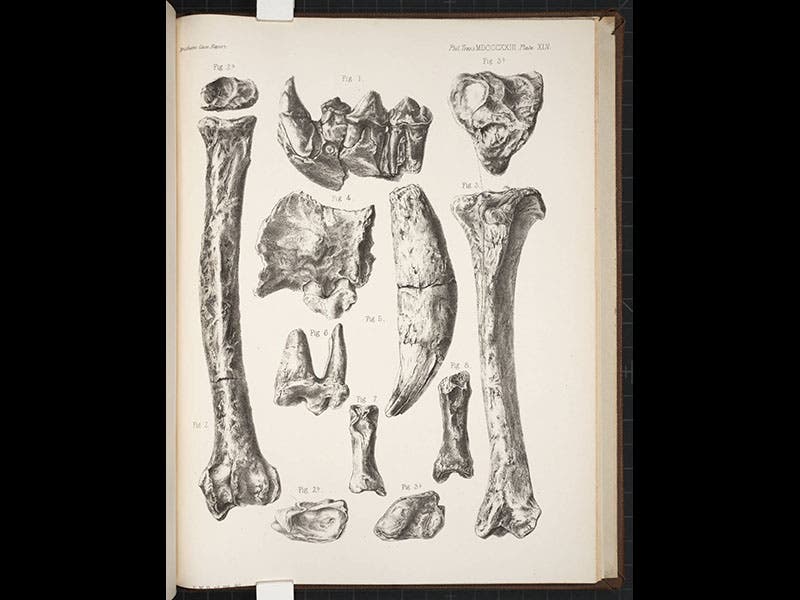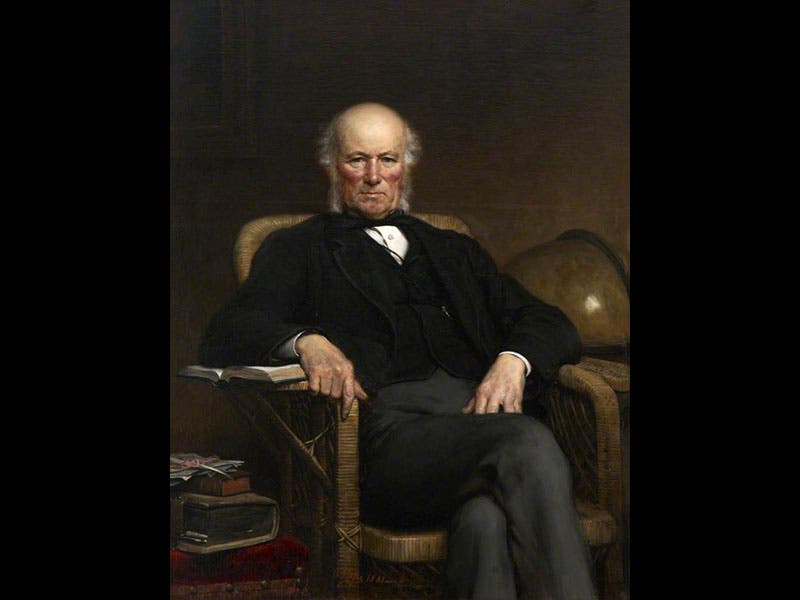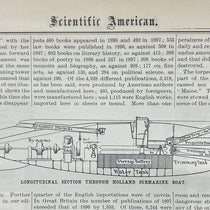Scientist of the Day - William Pengelly
William Pengelly, a British geologist and archaeologist, was born Jan. 12, 1812. Although raised in Cornwall, Pengelly moved to Devonshire in the 1830s and began to investigate the limestone caves around Tor Bay (see map, second image). One cave, Kent's Cavern, had been excavated in the 1820s by John MacEnery, who found extinct animal bones and what appeared to be primitive stone stools all mixed together. But few people believed that such evidence demonstrated the antiquity of humans, because it was hard to prove that the tools and the animals were really there at the same time. When Pengelly learned in 1858 of an unexcavated cave, called Brixham Cave (first image), on the other side of the Bay, he did a very clever thing. He wrote to the big names in the Geological Society of London, famous geologists like Charles Lyell and Hugh Falconer, and suggested that they send down some representatives to help investigate this virgin cave. Pengelly was perfectly capable of excavating Brixham himself; what he really wanted were reliable witnesses. When the geologists arrived, and the stalagmite of the cave floor was broken through, and extinct animal bones were found below the surface (third image), along with stone tools, it was no longer possible to say that the tools were a later intrusion. The London geologists went home and reported in 1859 that there was no longer any doubt about it: humans were ancient inhabitants of the globe, and not some late arrival. It was a real turning point in archaeology and anthropology. Their initial announcement was printed immediately in the Proceedings of the Royal Society of London, but the formal paper with images of the fossils in Brixham Cave did not appear in the Philosophical Transactions until 1873. We displayed this article in our 2012 exhibition, Blade and Bone: The Discovery of Human Antiquity.
We also have, in our History of Science Collection, an unusual collection of Pengelly offprints. Someone in the 1880s lovingly collected together scores of printed papers by Pengelly, many of them extracted from the Transactions of the Devonshire Association for the Advancement of Science, Literature, and Art, and bound them up in three fat volumes. A real treasure trove awaits some budding Pengelly scholar looking for a topic for a masters or PhD thesis.
The portrait of Pengelly is in the Torquay Museum (fourth image).
Dr. William B. Ashworth, Jr., Consultant for the History of Science, Linda Hall Library and Associate Professor, Department of History, University of Missouri-Kansas City. Comments or corrections are welcome; please direct to ashworthw@umkc.edu.










